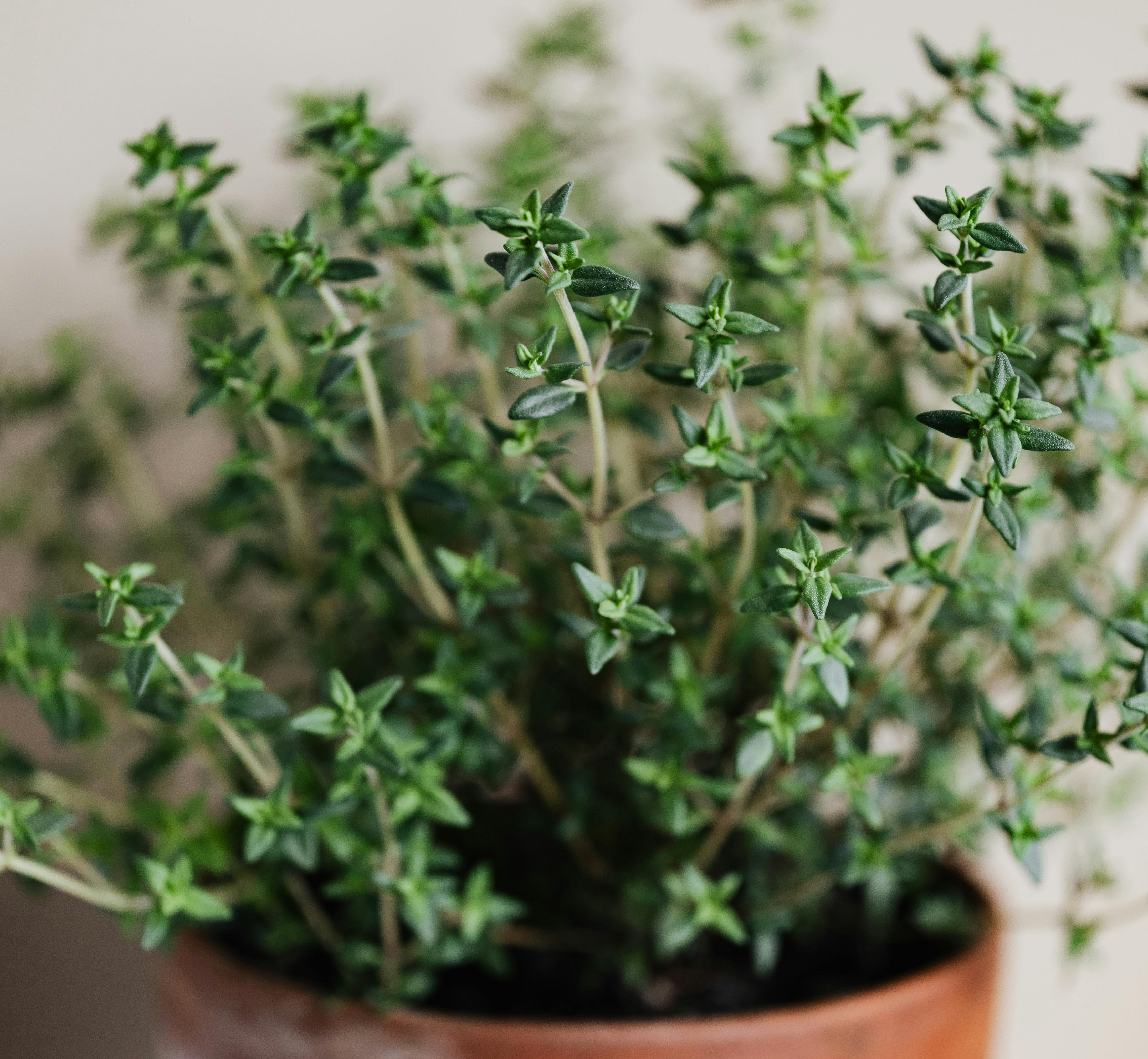Thyme (Thymus vulgaris) is one of the oldest cultivated herbs and it was first grown in the Levant and surrounding regions. Thyme was used for a variety of culinary, religious, and medicinal purposes throughout the ancient and modern Middle East. It spread to Europe following Roman conquest, who used the herb to purify their rooms and add aroma to their food. It became popular in Medieval Europe as a symbol of bravery and courage, and was frequently given to knights as gifts before battle, another tradition likely brought about by the Romans [1].
Thyme grows best in hot, sunny locations with well-drained soil – all three of which are present in the Levant and other Middle Eastern regions. It grows as a perennial, and requires frequent pruning to keep from growing a woody stem [1]. Thyme is still grown across the Middle East today, although most of it comes from countries like Turkey, Spain, Jordan, and Morocco [3].

Growing Instructions for Thyme
FOR OUTDOOR GROWTH
LIFE CYCLE: Summer and Orange thyme: Tender perennial in Zones 6–8. German Winter and Creeping thyme: Perennial in Zones 5–8.
CULTURE: Transplant (recommended) — Start seeds in flats 8–10 weeks before the last frost. Sow seeds on top of the growing medium and cover with a thin layer of soil mix. Keep moist until germination. Transplant to individual containers when plants have 4 true leaves. After last frost in spring, transplant outside and space 6–8” apart, in rows at least one foot apart. Pinch off growing tips off upright growing varieties to make bushier plants. Thyme will become woody and needs to be divided or replaced after 3–4 years.
Direct seeding is not recommended.
GERMINATION: 14–21 days at 67–70°F (18–21°C).
LIGHT/SOIL REQUIREMENTS: Thyme does best full sun, except in very hot climates where it needs part shade to do well. Prefers light, dry, well-drained soil in full sun.
HEIGHT: 6–12”
HARVEST: Cut only a few leaves the first year in order for the plants to winter over. In subsequent years, harvest just as the flowers begin to open. Cut back to within 4–5” above ground.
FOR INDOOR GROWTH
Choose a container at least 6-10" deep with good drainage (clay pots with drainage holes are best). To germinate seeds, use well-draining potting soil and sprinkle seeds on top. Cover very lightly with soil. Keep soil moist until seeds germinate. To increase success, cover the top of the container with plastic to increase humidity until germination occurs. Once seeds sprout, continue to keep soil moist, but do not allow the soil to get waterlogged — Thyme grows better in slightly dry soil rather than wet soil. Place the container in a sunny location. Pinch stems back regularly to encourage bushier growth and prevent legginess. Trim flower buds as they appear, as this will encourage continued leaf growth and prevent the flavor from diminishing. Repot when overcrowding occurs.
Cultural Relevance of Thyme
The first written record of Thyme comes from an ancient Sumerian text from over 3000 years ago, where it was described as an antiseptic. Thyme was frequently used by Ancient Egyptians for embalming, likely for its ability to kill bacteria and fungus, as well as for its pleasant aroma. Roman emperors also used thyme for a variety of reasons, including in religious rituals, as a way to purify their home, and for protection. Many Romans believed that thyme could stop the effects of poison, which made it a very popular herb among emperors and politicians [2].
Many of the chemical compounds in thyme are known for their healing properties, including the chemical thymol, which has historically been used as both an antibiotic and antiseptic, and is still used today in products like mouthwash. The flavonoids in thyme are also known for their anti-inflammatory properties, and the phenolic acids are known for their own antioxidant, anti-inflammatory, and antimicrobial activities [1]. Much like the common English phrase, many Middle Easterners state that consuming thyme on a regular basis will ‘keep the doctors away’, likely due to the herb’s various healing properties [3].
Thyme is rich in potassium, iron, calcium, manganese, and vitamins A, K, E, and C, as well as various other health-boosting compounds such as antioxidants and anti-inflammatories (see Medicinal Uses of Thyme).
Thyme is frequently used both fresh and dry, although fresh thyme is primarily used in summer dishes due to its time of harvest. Although more flavorful and aromatic, fresh thyme has a very short shelf life, making dried thyme a staple for all Middle Eastern kitchens. Many recipes measure thyme “by the sprig”, which is a soft branch of thyme that is generally sold fresh. Depending on the dish, some recipes call for the use of the entire sprig, while others require only the leaves. Thyme essential oil is also important in Levantine and other Middle Eastern recipes, especially for the condiment or spice blend of za’atar [1].


